Sym-Phony of the Night – ‘Citadale: The Legends Trilogy’ REVIEW
There really isn’t a fine line between an homage and a rip-off. But there are some works that straddle that line and walk/dance on it like a driver pulled over for suspected DUI. Citadale: The Legends Trilogy is one such game. Presenting itself as throwback to the original beloved Castlevania, it’s really just Castlevania; if it were infected with leprosy and carelessly dumped on with a bucket of multicolored paint.
Citadale sells itself as a sweet three-games-in-one package deal. It’s composed of three games: Gate of Souls, Curse of Darkness (totally not ripped off from this), and Legacy of Fate. Each game (or chapter, as the series refers to them) follows a hero from a generation of the Dorleac family of creature hunters (totally not them).
Firstly, calling itself “three games in one” is hardly acceptable.
Each “game” has almost no variation from the other. Whatever little variation they have, made absolutely no sense and seems arbitrary.
In the first “game” – where you play Dorleac family matriarch Sonja – you may activate a checkpoint whenever you’re halfway through a level (where you’ll respawn WHEN you die). The game also seems to want you to collect coins as you go through each level. What are the coins for? I have absolutely no idea. It never even became a factor in the chapter.
The second chapter, where you play Gabriel Dorleac, son of Sonja, is a bit more standard. It’s also probably the “smartest” among the three. Instead of using checkpoints, a portal that takes you directly halfway through the level appears at the beginning after you die. This gives you the option pick up where you pretty much left off, or play the entire level again. It also has a sort of puzzle element; each level’s title is a clue to what you need to achieve in the level, or the boss won’t show.
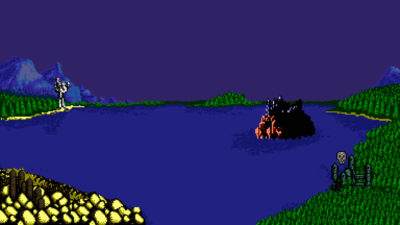
The third chapter, where the protagonist is Christopher Dorleac (Sonja’s grandson and Gabriel’s nephew), uses the same portal system. It also has an additional “stage select” after the first mission. It would have been great if it were like Megaman wherein it mattered what order you tackled through the stages. In this case, as long as you pick Citadale Island last, it doesn’t matter which level you go through first.
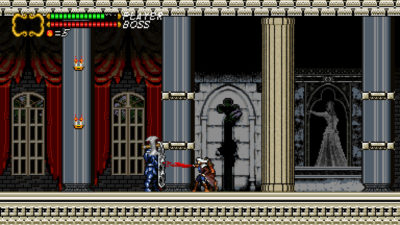
The entire “series” is marred with problems, starting with hit detection.
The hitboxes in this game are horrible. A torch could be right in front of you and you still wouldn’t be able to hit it. But the moment you place the torch just slightly behind you and swing, voila, you hit it. There were even times I would have such a hard time hitting a target above me standing; but I would hit it perfectly while crouching.
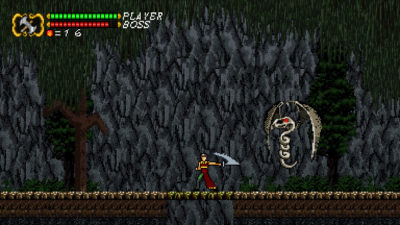
The boss AI is also so stupid, it’s frustrating. As in Mighty No. 9 levels of boss AI stupidity.
One boss I fought just hovered above me and did absolutely nothing. I quit the game after five minutes. Another boss, which pops up from underground, decided not to show itself for another five or so minutes until, again, I just quit. However, in the case that they do work as intended and try to kill you, you just have to figure out a First-Order Optimal Strategy (FOOS), like staying in a safe corner and throw a shuriken, or run-stab-rinse-repeat, and they go down easy.
Controlling your avatar has its high and low points.
The jumping in this game is great. It seems they took more influence from Megaman than they did the original Castlevania. The air control in Citadale is tight and responsive, unlike in the original Castlevania wherein you’re stuck in the jump arc once you hit that button. It made platforming much less of a pain given the game’s uninspired level design.
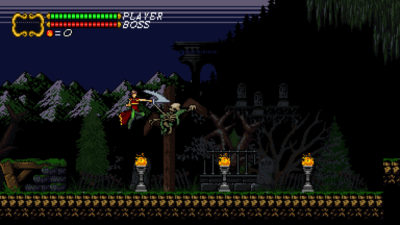
Attacking is another matter. Sometimes that attack doesn’t come out, especially when you’re in the air, making jumping attacks against airborne targets frustrating. Combine that with the aforementioned problematic hit detection and you’ve got enough motivation to pull your hair out.
Another issue is that the game doesn’t tell you that there’s a different button to make game dialogue move forward. As you play, you’re made to believe that you will only use the D-pad and two face buttons (jump and attack). In true Castlevania fashion, you hold the up the D-pad and press attack to throw an equipped item; so there is absolutely no indication that you will use any other button.
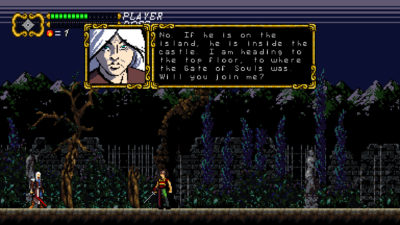
In the game’s sparse “cut-scenes” wherein there is dialogue, I found myself mashing on the face buttons and got absolutely no response. Just text hanging there waiting to be read again. Of course, I did the next logical thing, which is try every button. It would’ve been instantly solved if the dialogue moved forward as soon as the correct button was pressed. Unfortunately, the dialogue move after more than a second after the press. I was only able to figure it out after pushing each button and waiting two seconds before trying another.
Given that this is a “throwback” there is no save system.
This may be a welcome addition to some, as it is very reminiscent of those days with the Famicom and NES wherein we always have to start from the beginning when we die. In lieu of that, though, a stage select appears in the main menu after you’ve completed a chapter. It also has unlimited lives, so no need to worry about a game over screen when you die over and over again.
Citadale has actually been released last year on the Wii U, where it was also received as a mediocre game. Now that it has been ported to PC on Steam, all that mediocrity is now ready for you to enjoy. At PhP 287.95 (-10% off as an introductory offer), it doesn’t seem like much of a dent, but just add another hundred or so, and you’ll get something infinitely more enjoyable and re-playable like Rogue Legacy.
Or you could just wait for Bloodstained: Ritual of the Night. You’d be better off twiddling thumbs until March 2018 rather than playing Citadale.




